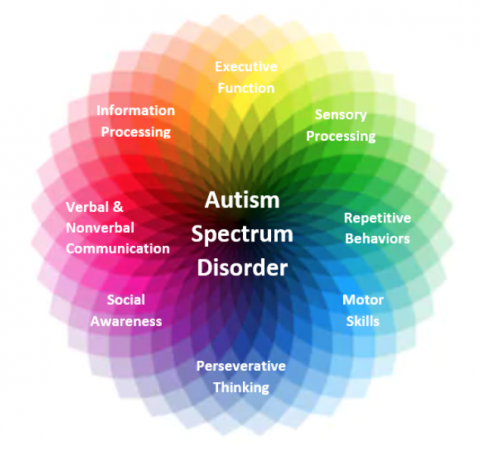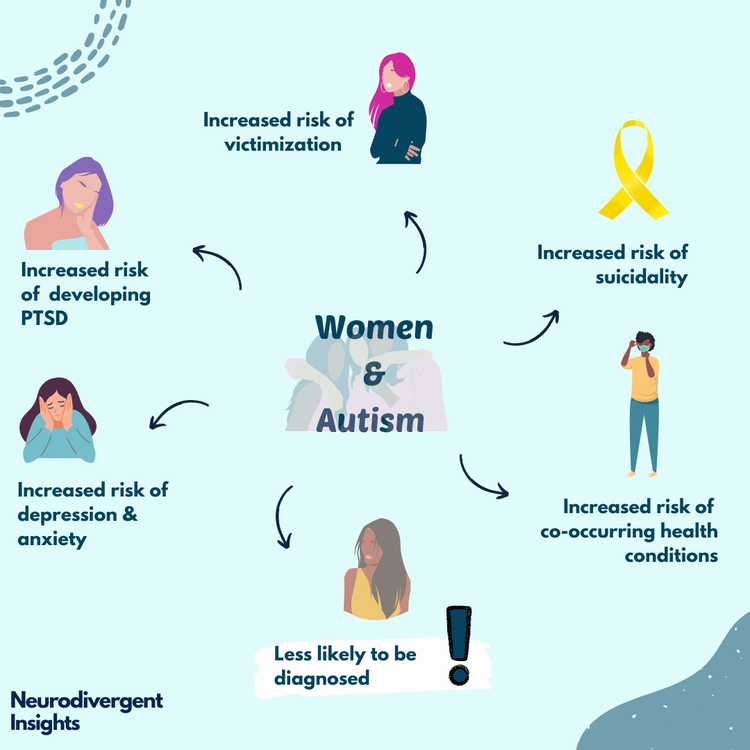Navigating Social Challenges: Tips for Individuals Coping With Autism
Checking Out Autism: Techniques for Reliable Interaction and Communication
Efficient interaction and interaction with people on the autism spectrum necessitate a detailed understanding of their unique demands and choices. Strategies such as employing clear language, making use of aesthetic supports, and promoting constant routines can significantly enhance engagement and lower anxiousness. Acknowledging the significance of non-verbal signs and shared interests leads the means for significant connections. Nevertheless, the complexities of these methods disclose more considerations that merit expedition, specifically in how they can be adjusted to private experiences and diverse contexts. What might these adjustments look like in practice?
Recognizing Autism Spectrum Problem
Autism Spectrum Disorder (ASD) incorporates a variety of neurodevelopmental problems identified by obstacles in social interaction, communication, and repetitive behaviors. The term "spectrum" reflects the diverse symptoms and differing degrees of intensity experienced by people with ASD. While some may exhibit considerable disabilities, others might present high-functioning characteristics, enabling for higher freedom in life.
The start of ASD typically occurs in early childhood, with signs usually recognizable by age two. Early indicators may consist of delayed speech advancement, restricted eye get in touch with, and problems in understanding social signs. Although the exact etiology of ASD remains uncertain, research suggests a mix of genetic and environmental elements plays a vital duty in its development.
People with ASD usually have unique strengths, such as enhanced interest to information and outstanding memory abilities. They may struggle with understanding abstract principles and taking care of modifications to routine - autism. Consequently, treatments and support customized to specific requirements are vital for fostering communication and social skills. Acknowledging the complexity of ASD is vital for promoting awareness, acceptance, and reliable methods that help with meaningful communications with individuals on the spectrum.

Relevance of Clear Interaction
Efficient communication is important for fostering understanding and link, especially for individuals with Autism Spectrum Problem (ASD) Clear interaction not only helps with social interactions yet also boosts the individual's capacity to reveal their ideas, requirements, and emotions. For individuals with ASD, the nuances of language can frequently be challenging; as a result, utilizing unambiguous and uncomplicated language is necessary.
Furthermore, clear interaction assists reduce frustration and anxiousness that may emerge from misunderstandings. When messages are shared in a consistent and straight manner, people with ASD are better geared up to interpret information properly, which can substantially enhance their social interaction and engagement in different setups.
Establishing routines and using aesthetic supports can further boost clear interaction. These techniques give individuals with foreseeable frameworks that help comprehension and retention of details. Additionally, proactively being and listening person during interactions promotes an encouraging environment where individuals with ASD really feel valued and recognized.
Ultimately, prioritizing clear interaction not only encourages people with ASD but likewise promotes even more purposeful links with their peers, caregivers, and the wider neighborhood, leading the method for comprehensive communications and collaborative relationships. - autism
Non-Verbal Communication Techniques
Interaction prolongs past words, and for individuals with Autism Range Disorder (ASD), non-verbal cues play a considerable function in interactions. Non-verbal communication methods can consist of face expressions, motions, body movement, and eye call, every one of which work as essential parts for communicating feelings and purposes.
Comprehending and translating these non-verbal signals can improve interactions with people with ASD. As an example, a cozy smile or open stance can develop an inviting environment, motivating interaction. Similarly, making use of aesthetic aids-- such as picture cards or icons-- can link communication gaps and aid share messages better.
It is additionally crucial to be mindful of individual area, as individuals with ASD might have different convenience degrees concerning proximity. Observing their responses to physical closeness can educate suitable adjustments.

Developing Encouraging Atmospheres
Creating a supportive environment is crucial for cultivating her latest blog favorable interactions and boosting the wellness of individuals with Autism Range Disorder (ASD) Such settings can substantially decrease anxiety and produce a sense of safety and security, enabling people to express themselves extra easily.
To achieve this, it is vital to think about sensory sensitivities that people with ASD may experience. Customizing the physical room to include soft lights, minimal history noise, and comfy seating can produce a relaxing ambience. Furthermore, using constant regimens and clear visual timetables can help individuals prepare for shifts and decrease unpredictability, further advertising convenience.
Social spaces must be structured to minimize overwhelming stimulations while supplying chances for involvement in preferred activities. Assisting in locations designated for peaceful time can likewise work as a refuge during moments of tension. Notably, incorporating aspects of selection empowers individuals, allowing them to work out agency in their setting.

Encouraging Social Communications
Fostering social communications amongst people with Autism Spectrum Condition (ASD) requires deliberate strategies that focus on convenience and interaction. Developing foreseeable routines can assist reduce anxiousness, making social setups extra approachable. Creating organized environments with defined duties and roles permits people to involve without the overwhelming pressure of disorganized social dynamics.
Integrating interests and staminas right into social tasks can work as a stimulant for interaction. As an example, organizing group tasks around shared leisure activities or topics of fascination can assist in all-natural conversations and connections. Furthermore, making use of aesthetic supports, such as social scripts or pictorial routines, can aid in recognizing social signs and expectations.
Modeling suitable social habits is crucial - autism. Adults and peers need to show reliable interaction strategies, consisting of energetic listening and turn-taking. Role-playing scenarios can also provide a safe space for individuals to practice these skills
Lastly, fostering peer relationships through comprehensive techniques is essential. Encouraging comprehensive playdates or group trips can create opportunities for resource socialization in a comfortable setup. By applying these educators, strategies and caretakers can significantly boost social communications for individuals with ASD, promoting their total social growth and wellness.
Verdict
Finally, effective interaction and interaction strategies are essential for sustaining you can check here individuals with Autism Range Disorder. Highlighting clear language, incorporating non-verbal hints, and developing predictable regimens considerably boost engagement and lower anxiety. Producing supportive atmospheres fosters risk-free social communications, while encouraging shared passions facilitates significant links. Ultimately, these methods encourage individuals with autism to browse social landscapes, promoting their overall wellness and enabling the development of long lasting connections.
Reliable interaction and communication with people on the autism range necessitate an extensive understanding of their special demands and choices. Clear interaction not just facilitates social interactions but also enhances the individual's ability to express their requirements, thoughts, and emotions.Cultivating social communications amongst people with Autism Spectrum Disorder (ASD) calls for deliberate approaches that prioritize convenience and involvement. By applying these teachers, techniques and caregivers can considerably enhance social communications for individuals with ASD, promoting their total social advancement and well-being.
In conclusion, reliable communication and interaction methods are necessary for supporting people with Autism Spectrum Problem.